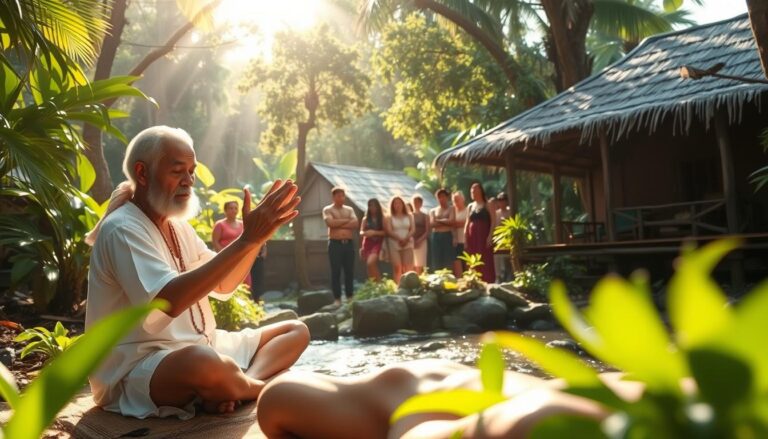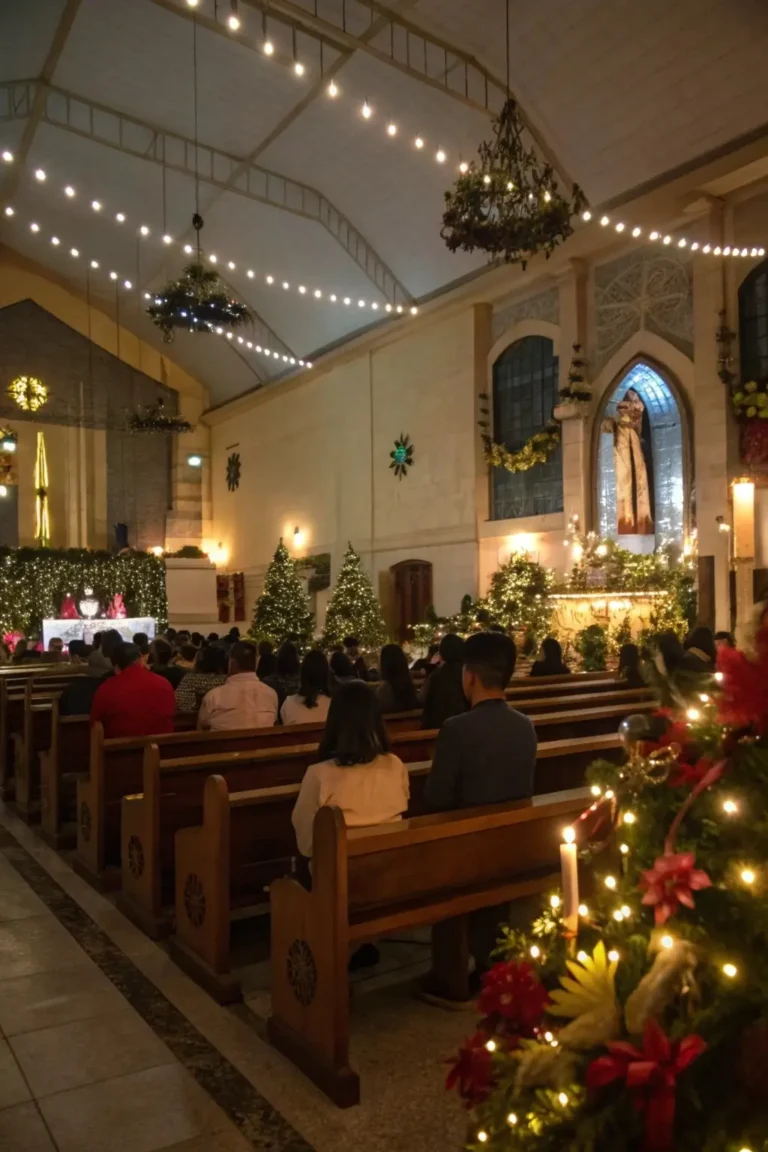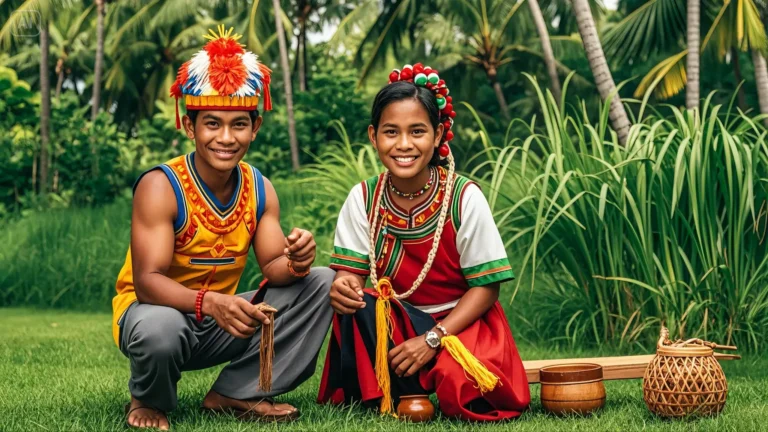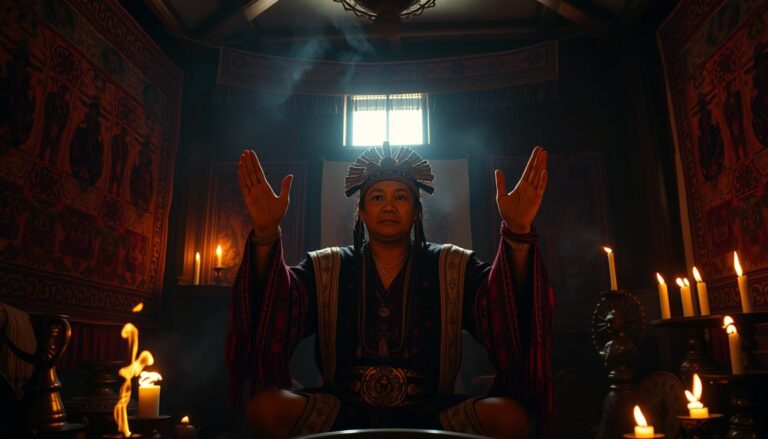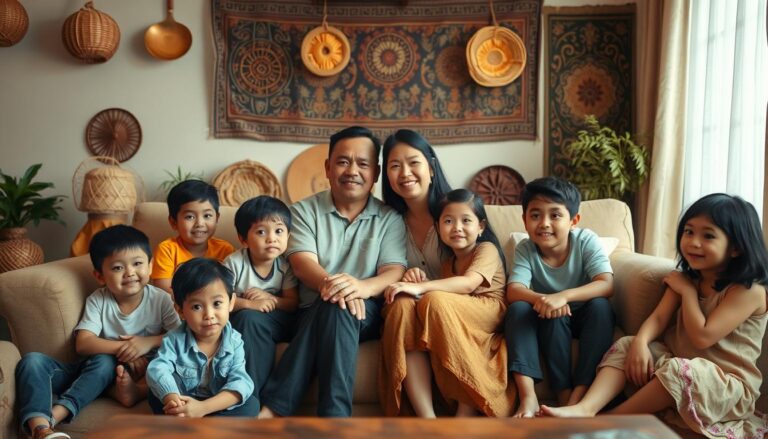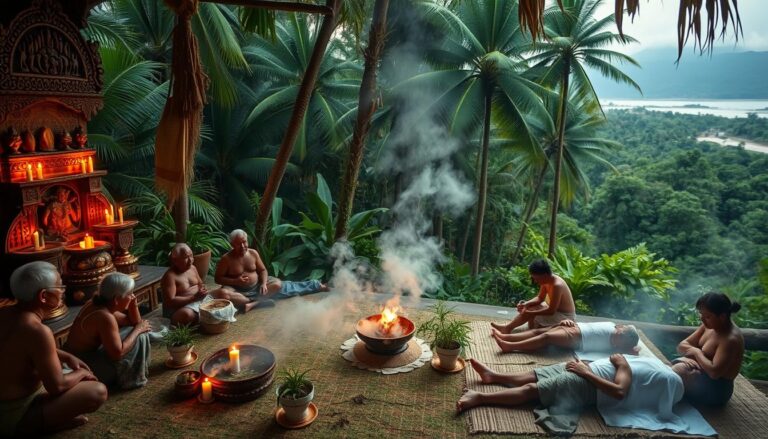Traditional Filipino Health Practices for Modern Living
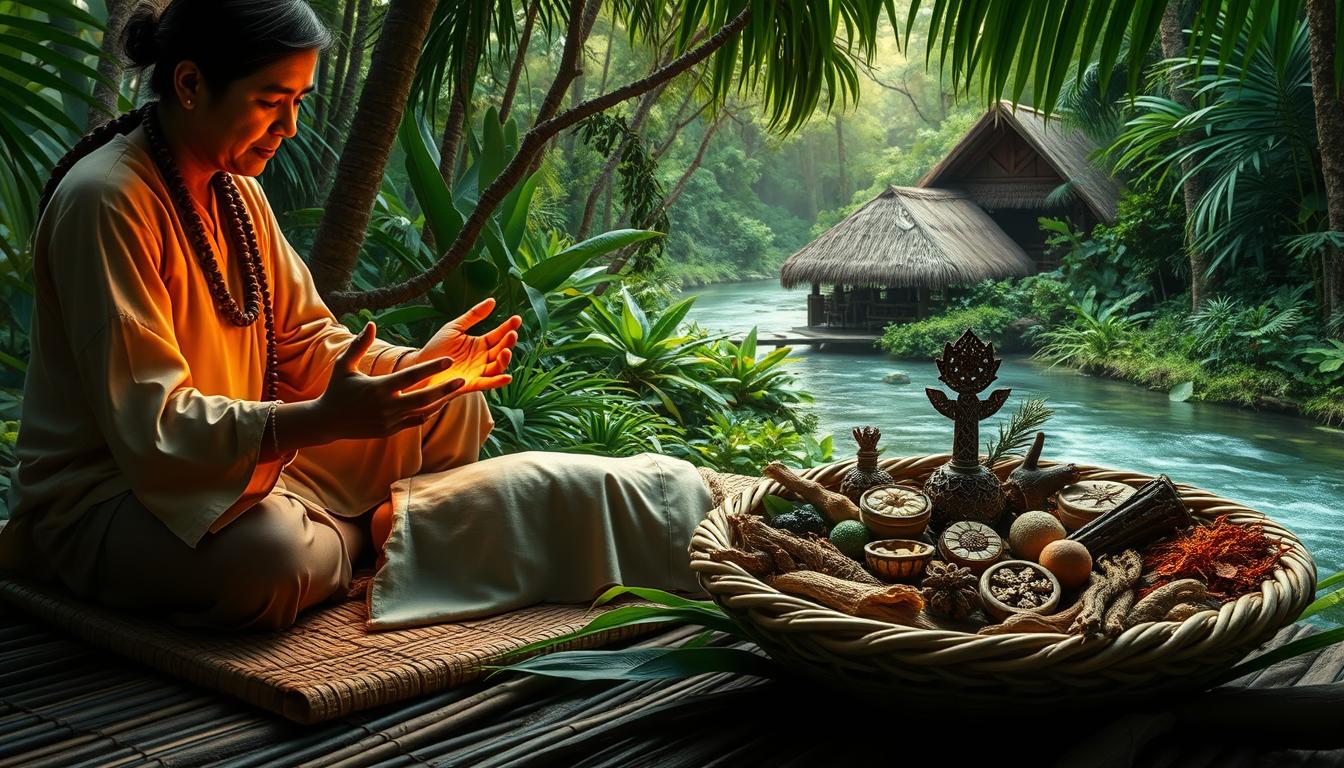
Long before modern medicine, ancient cultures developed holistic systems to care for the body and spirit. In the Philippines, these methods blended indigenous wisdom with influences from centuries of cultural exchange. Scholars like Virgil Mayor Apostol have documented their roots in pre-colonial rituals led by community healers called babaylans, who addressed physical ailments alongside emotional and spiritual needs.
These time-tested approaches focus on balance—harmonizing energy flow through touch, herbal remedies, and mindfulness. One example is hilot, often misunderstood as simple massage. In reality, it corrects skeletal alignment and clears energy blockages through techniques passed down generations. This reflects a worldview where wellness connects deeply to cultural identity and nature’s rhythms.
Today, these traditions offer fresh perspectives for contemporary lifestyles. From ginger-based salabat teas to mindfulness rituals, they complement modern therapies by addressing stress, chronic pain, and emotional well-being. Their resurgence aligns with global interest in integrative health solutions grounded in heritage.
Key Takeaways
- Ancient Filipino methods emphasize balance across physical, emotional, and spiritual health.
- Practices like hilot combine therapeutic touch with cultural storytelling and energy work.
- Herbal remedies and mindfulness rituals remain practical for modern stress management.
- Historical records trace these traditions to pre-colonial healers and Spanish-era documentation.
- Integrating these approaches can enhance personal wellness while preserving cultural legacy.
The Rich History of Filipino Healing Traditions
Centuries before globalization reshaped healthcare, island communities developed intricate systems blending physical care with spiritual awareness. At the heart of these methods stood babaylans – revered healers who combined herbal knowledge with rituals to maintain community wellness.
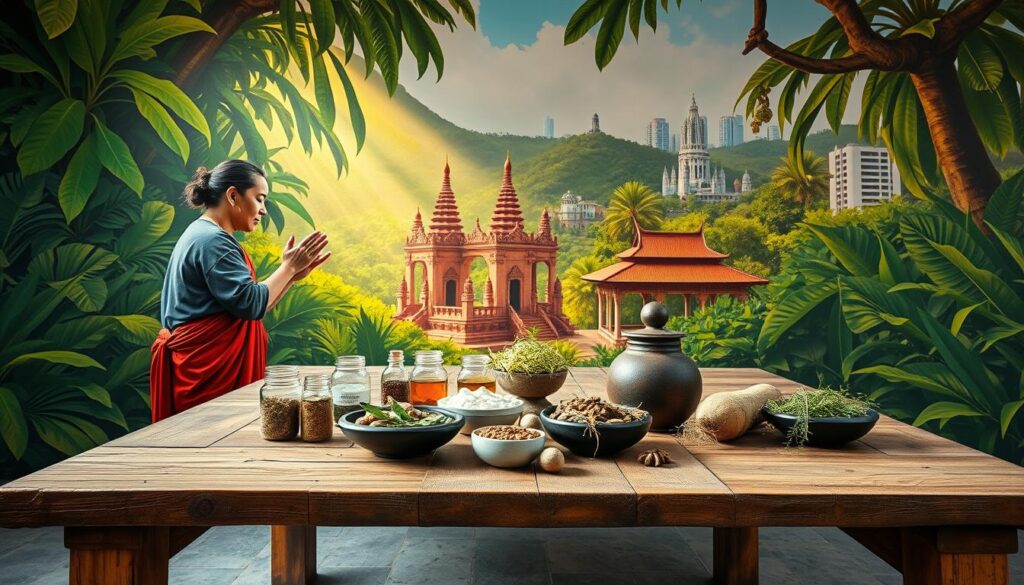
Origins and Pre-colonial Practices
Early healing sessions often began with oràsyon – sacred chants believed to activate the body’s energy flow. Babaylans used touch therapy alongside prayers, addressing both visible injuries and unseen imbalances. Historical texts describe their use of:
- Medicinal plants like lagundi for respiratory care
- Bamboo tools for muscle relief
- Smoke rituals to cleanse spaces
Evolution Through Colonial Influences
Spanish colonizers introduced hospitals but failed to erase ancestral methods. While Western medicine gained urban footholds, rural areas preserved energy-based therapies through oral traditions. This dual system created unique fusions:
| Pre-colonial Elements | Colonial Additions | Modern Legacy |
|---|---|---|
| Herbal compress therapy | Church-influenced prayers | Integrated wellness retreats |
| Bone-setting massage | Clinical diagnostics | Sports therapy hybrids |
| Spiritual cleansing | Pharmaceutical herbs | Mind-body workshops |
Despite modernization efforts, 72% of rural communities still consult local healers for chronic pain management. Organizations now work to preserve these methods while meeting global safety standards.
Traditional Filipino Health Practices for Modern Living
Across the islands, hands-on healing methods have shaped wellness for generations. Two standout approaches – hilot and ablon – combine precise touch with cultural wisdom to address modern aches and stresses.
Exploring Hilot, Ablon, and Other Techniques

Hilot goes deeper than typical massage. Practitioners assess muscle tension and joint alignment using palm pressure and stretching. Virgil Mayor Apostol’s manuals detail how it resets the body’s energy pathways, similar to acupressure but rooted in local anatomy knowledge.
Ablon focuses on skeletal adjustments. One sub-technique, pekkel, uses rapid hand movements to release trapped nerves. Another method addresses upper-body strain through seated postures – a favorite among office workers in the country’s cities.
Integration of Prayers, Rituals, and Energy Medicine
These methods blend physical care with spiritual elements. Healers often whisper bulong prayers while applying herbal oils. “The hands guide, but the spirit completes the work,” notes a Manila-based practitioner.
- Herbal compresses warmed over coals for deep muscle relief
- Smudging rituals to clear negative energy before sessions
- Modern hybrids like laser-guided alignment checks
Today’s clinics pair these traditions with ultrasound therapy and mindfulness coaching. This fusion keeps the mind-body connection central while meeting global safety standards. As interest grows, these practices remind people worldwide that true healing often involves more than just the physical form.
Holistic Modalities: Herbalism, Rituals, and Bodywork
Beneath the lush canopies of the Philippines’ rainforests lies a living pharmacy – over 1,500 plant species used for centuries to treat ailments. This botanical wealth fuels a healing culture where herbalism intertwines with spiritual care.
The Role of Medicinal Plants and Albularyos
Albularyos, local healers, craft remedies using leaves like lagundi for coughs and sambong for kidney health. They pair these with whispered prayers, believing illness stems from both physical and spiritual imbalances. “The earth provides cures, but the soul must be ready to receive them,” explains a practitioner from Cebu.
Modern science validates 120 plants used in these healing methods. Ginger’s anti-inflammatory properties and moringa’s nutrient density now appear in global supplements. Yet traditional applications remain unique – like kaman gyan resin burned during purification rituals.
Techniques in Cupping, Tuob, and Rorof-Rorof
Bodywork therapies address modern stress through ancient techniques:
- Cupping therapy (ventosa): Heated bamboo cups create suction to ease muscle tension
- Tuob steam sessions: Herbal-infused vapors open airways while chants calm the mind
- Rorof-rorof massage: Rhythmic kneading improves circulation using coconut oil blends
These approaches differ from western medicine by treating fatigue as energy blockage rather than chemical imbalance. Many clinics now combine them with physical therapy – heated compresses before ultrasound sessions, or prayers during acupuncture.
Research shows 68% of patients report better sleep after integrated treatments. As one Manila nurse notes: “We’re not replacing hospitals. We’re helping bodies remember how to heal.”
Bringing Ancient Practices into Contemporary Wellness
Urban wellness centers now blend ancestral knowledge with clinical research, creating bridges between old and new. This fusion offers practical solutions for today’s stressors while honoring cultural roots. From Los Angeles to New York, these methods gain traction as people seek holistic relief beyond conventional treatments.
Modern Adaptations and Integration with Western Medicine
Practitioners like Lyn Pacificar update ancestral methods for modern needs. Her clinics combine hilot techniques with physical therapy tools, addressing muscle strain in office workers and athletes. “We use coconut oil infused with menthol for deeper skin absorption,” she explains. “It’s science meeting tradition.”
In California spas, cupping sessions now include infrared heat to enhance circulation. A San Diego center pairs herbal compresses with chiropractic adjustments, reporting 40% faster relief for back pain. These hybrids meet FDA standards while preserving core principles.
Community Engagement and Maintaining Cultural Heritage
Workshops led by manghihilot healers teach families to make ginger salves and perform basic massage. The Philippine Institute for Traditional Health trains 500 practitioners yearly, ensuring skills pass to new generations. “Every person we train becomes a culture-bearer,” says their director.
In Texas, Filipino-American groups host tuob steam rituals using local herbs. These gatherings reduce isolation while promoting skin health and respiratory wellness. As one participant notes: “It’s not just about healing bodies—it’s about keeping our stories alive.”
Conclusion
In today’s fast-paced world, ancestral healing wisdom offers pathways to balance. For generations, methods like hilot have addressed physical tension through precise technique, while herbal oils and mindful meditation nurture emotional resilience. These approaches remain vital for individuals seeking relief from modern stressors.
Studies confirm their enduring value – 68% report improved sleep after combined treatments. Practitioners worldwide now blend ancestral techniques with clinical tools, creating hybrids that honor cultural roots. From ginger-infused compresses to energy-balancing relaxation rituals, these methods adapt without losing their essence.
Their legacy thrives through community workshops and cross-generational training. Families learn to craft healing salves, while clinics pair hilot with ultrasound therapy. This synergy between past and present enriches life quality holistically.
Consider exploring these time-tested strategies. Whether through localized relaxation practices or consultations with skilled practitioners, they offer tools for body-mind harmony. Their preservation ensures future generations inherit solutions that heal more than symptoms – they restore connection.

